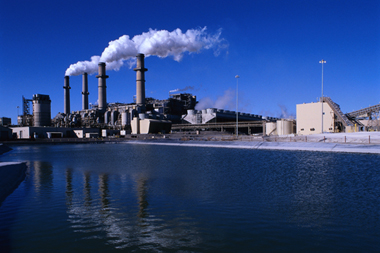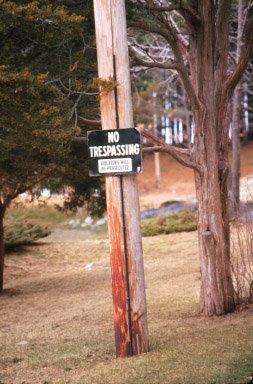Origin of the Idea
 <a onClick="window.open('/olcweb/cgi/pluginpop.cgi?it=gif::::/sites/dl/free/0073365955/124310/origins_image.gif','popWin', 'width=70,height=90,resizable,scrollbars');" href="#"><img valign="absmiddle" height="16" width="16" border="0" src="/olcweb/styles/shared/linkicons/image.gif"> (1.0K)</a> <a onClick="window.open('/olcweb/cgi/pluginpop.cgi?it=gif::::/sites/dl/free/0073365955/124310/origins_image.gif','popWin', 'width=70,height=90,resizable,scrollbars');" href="#"><img valign="absmiddle" height="16" width="16" border="0" src="/olcweb/styles/shared/linkicons/image.gif"> (1.0K)</a> | 16.1 Externalities |  <a onClick="window.open('/olcweb/cgi/pluginpop.cgi?it=gif::::/sites/dl/free/0073365955/124310/origins_image.gif','popWin', 'width=70,height=90,resizable,scrollbars');" href="#"><img valign="absmiddle" height="16" width="16" border="0" src="/olcweb/styles/shared/linkicons/image.gif"> (1.0K)</a> <a onClick="window.open('/olcweb/cgi/pluginpop.cgi?it=gif::::/sites/dl/free/0073365955/124310/origins_image.gif','popWin', 'width=70,height=90,resizable,scrollbars');" href="#"><img valign="absmiddle" height="16" width="16" border="0" src="/olcweb/styles/shared/linkicons/image.gif"> (1.0K)</a> | 16.2 Coase Theorem |  <a onClick="window.open('/olcweb/cgi/pluginpop.cgi?it=gif::::/sites/dl/free/0073365955/124310/origins_image.gif','popWin', 'width=70,height=90,resizable,scrollbars');" href="#"><img valign="absmiddle" height="16" width="16" border="0" src="/olcweb/styles/shared/linkicons/image.gif"> (1.0K)</a> <a onClick="window.open('/olcweb/cgi/pluginpop.cgi?it=gif::::/sites/dl/free/0073365955/124310/origins_image.gif','popWin', 'width=70,height=90,resizable,scrollbars');" href="#"><img valign="absmiddle" height="16" width="16" border="0" src="/olcweb/styles/shared/linkicons/image.gif"> (1.0K)</a> | 16.3 Information Failures |
 <a onClick="window.open('/olcweb/cgi/pluginpop.cgi?it=gif::::/sites/dl/free/0073365955/124310/origins_image.gif','popWin', 'width=70,height=90,resizable,scrollbars');" href="#"><img valign="absmiddle" height="16" width="16" border="0" src="/olcweb/styles/shared/linkicons/image.gif"> (1.0K)</a> <a onClick="window.open('/olcweb/cgi/pluginpop.cgi?it=gif::::/sites/dl/free/0073365955/124310/origins_image.gif','popWin', 'width=70,height=90,resizable,scrollbars');" href="#"><img valign="absmiddle" height="16" width="16" border="0" src="/olcweb/styles/shared/linkicons/image.gif"> (1.0K)</a> | 16.1 Externalities |
Although Henry Sidgwick (1838-1900) first articulated the idea of spillover costs and benefits (externalities), Arthur C. Pigou (1877-1959) receives most of the credit for formalizing the concept. Pigou, a British welfare economist (meaning that his economic theories focuses on maximizing the well-being of society), studied at King's College in Cambridge and later served as the chair of political economy at Cambridge from 1908 to 1943. The previous chair, Alfred Marshall, significantly influenced Pigou's thinking, as both were concerned about how to use economic theory to promote social well-being.
 <a onClick="window.open('/olcweb/cgi/pluginpop.cgi?it=jpg::::/sites/dl/free/0073365955/124343/origin30_1.jpg','popWin', 'width=430,height=323,resizable,scrollbars');" href="#"><img valign="absmiddle" height="16" width="16" border="0" src="/olcweb/styles/shared/linkicons/image.gif"> (97.0K)</a> <a onClick="window.open('/olcweb/cgi/pluginpop.cgi?it=jpg::::/sites/dl/free/0073365955/124343/origin30_1.jpg','popWin', 'width=430,height=323,resizable,scrollbars');" href="#"><img valign="absmiddle" height="16" width="16" border="0" src="/olcweb/styles/shared/linkicons/image.gif"> (97.0K)</a> |
To illustrate the concept of spillover effects, Pigou used the example of sparks from railway engines. These sparks would ignite surrounding woodlands or farmland, destroying timber or crops. Because the owners of the land were not compensated for the damage, those directly involved in the railway transaction (for example, the railway company and passengers) were not bearing the full cost of their exchange.
Pigou illustrated the idea of spillover benefits through an example of someone planting a forest. The reforestation benefited surrounding property owners through natural seeding of their vacant land, yet no compensation was paid for the benefit. As a result, said Pigou, less tree planting occurred than was optimal from society's perspective.
|
Pigou is also known for his contributions to the aggregate demand-aggregate supply model (the "real balances effect"), and to theories of price discrimination. He also argued that a more equal distribution of income would increase social welfare. "Any transference of income from a relatively rich man to a relatively poor man of similar temperament, since it enables more intense wants to be satisfied at the expense of less intense wants, must increase the aggregate sum of satisfaction."(1) Pigou's reasoning was that the marginal utility of a dollar for a poor man was greater than for a rich man, and so by transferring dollars from the rich to the poor, the net gain in social welfare would be positive.
- A.C. Pigou, The Economics of Welfare, 4th ed. (London: Macmillan, 1932), 89. [Originally published in 1920.]
Photograph courtesy of: (c)Corbis # EIS0073;
 <a onClick="window.open('/olcweb/cgi/pluginpop.cgi?it=gif::::/sites/dl/free/0073365955/124310/origins_image.gif','popWin', 'width=70,height=90,resizable,scrollbars');" href="#"><img valign="absmiddle" height="16" width="16" border="0" src="/olcweb/styles/shared/linkicons/image.gif"> (1.0K)</a> <a onClick="window.open('/olcweb/cgi/pluginpop.cgi?it=gif::::/sites/dl/free/0073365955/124310/origins_image.gif','popWin', 'width=70,height=90,resizable,scrollbars');" href="#"><img valign="absmiddle" height="16" width="16" border="0" src="/olcweb/styles/shared/linkicons/image.gif"> (1.0K)</a> | 16.2 Coase Theorem |
The Coase Theorem originated with a 1959 article by Ronald Coase. The article, appearing in the Journal of Law and Economics, drew the attention of the editor, Aaron Director, and a number of well-known University of Chicago economists, including Milton Friedman and George Stigler. Coase's article challenged A.C. Pigou's analysis of externalities, which concluded that government policy (for example, a tax) was needed to remedy spillover costs and benefits. Though skeptical, the Chicago group was so fascinated by Coase's idea that they invited him to Chicago (Coase was at the University of Virginia at the time). Coase convinced them that his analysis was correct, and the following year Coase published "The Problem of Social Cost," an article that helped earn him the Nobel Prize in 1991. In this article, Coase argued that externalities are reciprocal:
The [Pigou] approach has tended to obscure the nature of the choice that has to be made. The question is commonly thought of as one in which A inflicts harm on B and what has to be decided is: How should we restrain A? But this is wrong. We are dealing with a problem of a reciprocal nature. To avoid the harm to B would inflict harm on A. The real question that has to be decided is: Should A be allowed to harm B or should B be allowed to harm A? The problem is to avoid the more serious harm.(1)
To demonstrate what Stigler later termed "Coase Theorem," Coase used the example of a cattle rancher and a farmer. The cattle stray onto the farmer's land and destroy crops. If the property rights are structured such that the rancher is liable for the damages incurred by her cattle, she will have an incentive to offer payment to the farmer for the use of his land.
If the farmer's rights are protected, why would he negotiate? Because if the payment from the rancher exceeds what he would have earned growing crops, he will be better off allowing the cattle onto his land. If, conversely, the rancher holds the property right and can graze her cattle on the farmer's land, the farmer may offer payment for her to stop. If the farmer offers more than what the rancher loses by not grazing her cattle on that land, the rancher will accept payment and move her cattle elsewhere.
If property rights are clearly defined, the number of affected parties is small, and the costs of negotiating are low, then according to Coase, externalities can be eliminated through private bargaining, with no need for government intervention.
|  <a onClick="window.open('/olcweb/cgi/pluginpop.cgi?it=jpg::::/sites/dl/free/0073365955/124320/origin30_2.jpg','popWin', 'width=303,height=454,resizable,scrollbars');" href="#"><img valign="absmiddle" height="16" width="16" border="0" src="/olcweb/styles/shared/linkicons/image.gif"> (51.0K)</a> <a onClick="window.open('/olcweb/cgi/pluginpop.cgi?it=jpg::::/sites/dl/free/0073365955/124320/origin30_2.jpg','popWin', 'width=303,height=454,resizable,scrollbars');" href="#"><img valign="absmiddle" height="16" width="16" border="0" src="/olcweb/styles/shared/linkicons/image.gif"> (51.0K)</a> |
- Ronald H. Coase, "The Problem of Social Cost," Journal of Law and Economics 3 (October 1960) pp. 1-44.
Photograph courtesy of: (c)Nance Trueworthy
 <a onClick="window.open('/olcweb/cgi/pluginpop.cgi?it=gif::::/sites/dl/free/0073365955/124310/origins_image.gif','popWin', 'width=70,height=90,resizable,scrollbars');" href="#"><img valign="absmiddle" height="16" width="16" border="0" src="/olcweb/styles/shared/linkicons/image.gif"> (1.0K)</a> <a onClick="window.open('/olcweb/cgi/pluginpop.cgi?it=gif::::/sites/dl/free/0073365955/124310/origins_image.gif','popWin', 'width=70,height=90,resizable,scrollbars');" href="#"><img valign="absmiddle" height="16" width="16" border="0" src="/olcweb/styles/shared/linkicons/image.gif"> (1.0K)</a> | 16.3 Information Failures |
While information has always had economic value, George Stigler (1911-1992) was the one who brought it to the forefront of analysis. In his 1961 Journal of Political Economy article, "The Economics of Information," Stigler asserts that information is an economic good and, like all goods, consumers weigh marginal benefits and marginal costs to determine how much to acquire.
Educated at the University of Washington (B.B.A.), Northwestern University (M.B.A.), and the University of Chicago (Ph.D.), Stigler taught at Iowa State, Minnesota, Brown, and Columbia Universities, and eventually joined the famous Chicago school of economics. The Chicago school represents the more conservative mainstream in economic thought. As such, it is believed that free markets are the best mechanism for allocating resources, and that negative economic outcomes do not stem from flaws in the market, but from poor decisions made with faulty or incomplete information.
|  <a onClick="window.open('/olcweb/cgi/pluginpop.cgi?it=jpg::::/sites/dl/free/0073365955/124320/origin30_3.jpg','popWin', 'width=430,height=325,resizable,scrollbars');" href="#"><img valign="absmiddle" height="16" width="16" border="0" src="/olcweb/styles/shared/linkicons/image.gif"> (97.0K)</a> <a onClick="window.open('/olcweb/cgi/pluginpop.cgi?it=jpg::::/sites/dl/free/0073365955/124320/origin30_3.jpg','popWin', 'width=430,height=325,resizable,scrollbars');" href="#"><img valign="absmiddle" height="16" width="16" border="0" src="/olcweb/styles/shared/linkicons/image.gif"> (97.0K)</a> |
The adverse selection problem and lemon example comes courtesy of George Akerlof (b. 1940) of the University of California at Berkeley. As the lemon example illustrates, sometimes buyers lack information, leading to adverse selection. Sometimes sellers lack relevant information, such as insurance providers who lack full knowledge of their clients' behaviors and probabilities of loss. In any case it is insufficient information that causes market failure.
Photograph courtesy of: (c)Photodisc # BU002335; |



